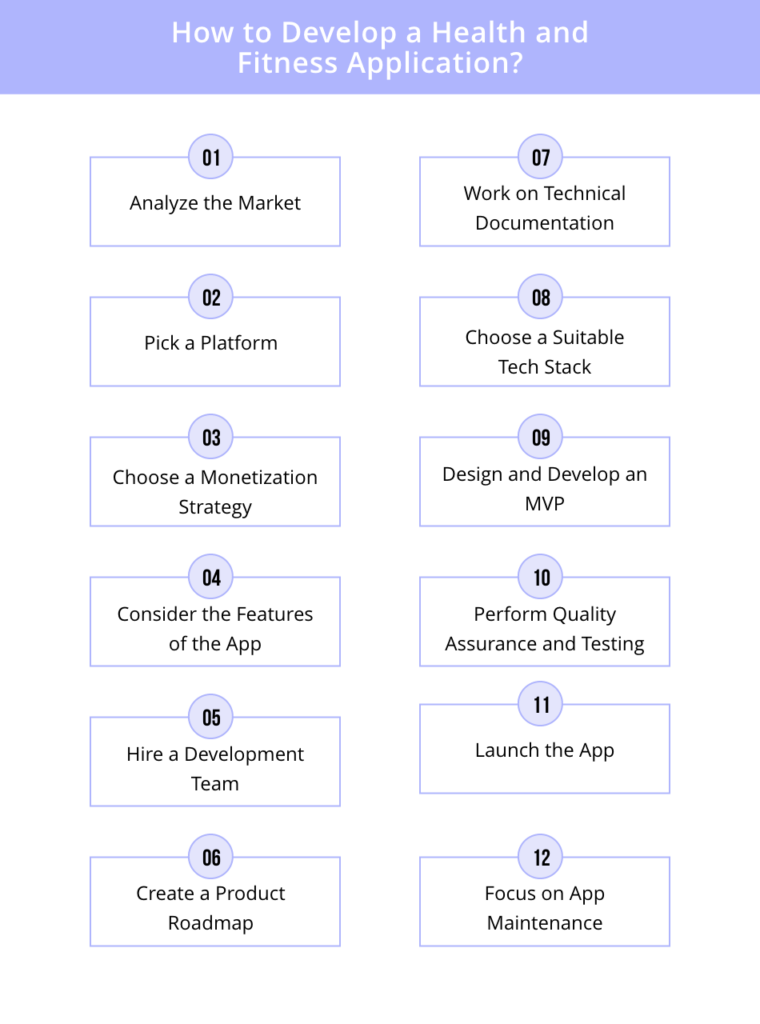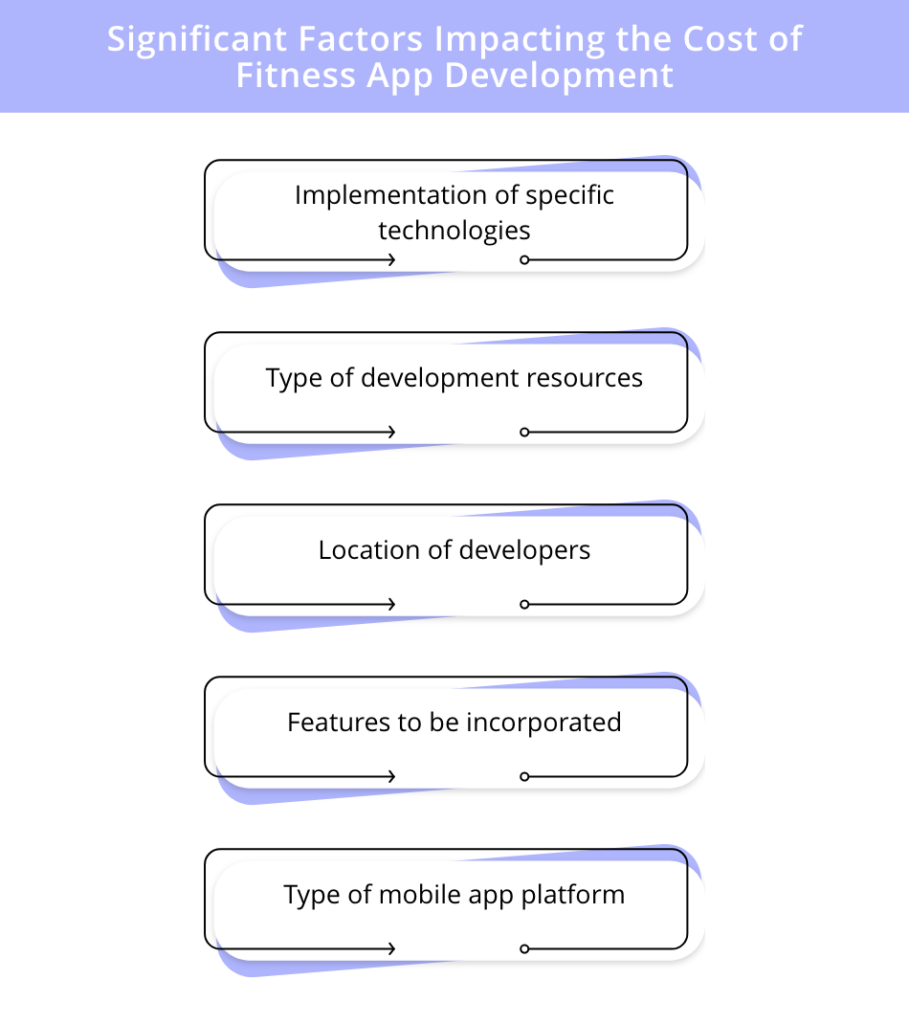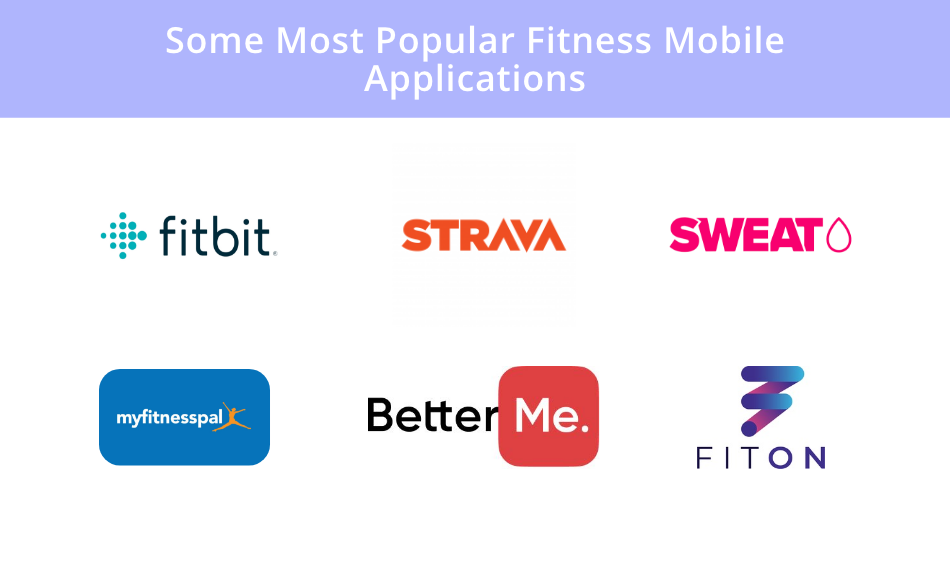In times when maintaining health and fitness has become a priority, developing a mobile fitness app could be a profitable approach for businesses across industries.
Updated 18 October 2023

Director at Appventurez
Today, a significant section of the global population is focusing on health and fitness more than ever before. This leads to unprecedented growth in the domain of fitness app development. It especially became more prominent after the inception of smartwatches, health bands, and fitness trackers.
However, the higher adoption of fitness apps should not come as a surprise. Since people are so carried away with their lives, these digital solutions turn out to be the most preferred way to maintain health and wellness.
This brings a great opportunity for companies in the health and fitness sector to expand their business and generate revenue. Knowing the right path to develop an intuitive fitness solution can help them hold a significant position in the market.
People started embracing mobile fitness solutions to stay healthy during isolation when the world was under lockdown. This is the reason the fitness apps segment generated a revenue of $5.35 billion in 2021 and is expected to cross the $19.3 billion mark this year.
In fact, the popularity of fitness applications reached an all-time high. This could be easily understood by the fact that fitness apps have been downloaded more than 400 million times. It was also projected that the number of users accessing these apps will be over 86.3 million in the US.
Besides this, the latest trends in the mobile app industry, like the inception of 5G and wearable technology have also boosted the growth of fitness apps. By using 5G, businesses across the globe have unlocked the doors for customers to enjoy live training sessions with super-smooth and seamless video connectivity.
With the right fitness app development approach and top-class strategies, businesses can easily get a hold of the market. Peloton, one of the most popular fitness apps of today’s time can be the perfect example, boasting around 92% retention rate.
While creating a fitness app, it is crucial to determine its category. Based on different functions, a fitness app can be categorized into three major types:

The first one in this list is a workout app where users can find different kinds of exercises, workout plans, and training guides. The primary objective of these workout applications is to offer video and audio instructions imitating a different set of exercises. Nike Fitness Training App can be one of the popular examples in this category. These applications can be further categorized into:
These apps consist of personalized workout classes and home-based training plans.
These apps suggest users ways to meditate themselves and tackle stress and anxiety.
These apps help users set objectives and notify them when they accomplish the goals. Mobile apps for walking, running, cycling, swimming, and hiking – all come under this category.
These applications can track the overall physical activities of users related to fitness and health. To be specific, activity tracking apps collect information like the number of steps walked, distance covered, time taken to complete a physical activity, hours slept, and total calories burned. One of the most popular apps in this section is HealthKit App. Activity tracking apps can be further categorized into:
With Fitness tracker app development, companies can show fitness-related data in the form of charts, graphs, etc. to describe users’ progress.
These applications suggest ways that help with sleeping. Besides this, they also keep track of the sleeping schedule and patterns of users.
Well, a balanced and nutritious diet is an essential aspect of fitness. This is why it is important for people to have a constant check on their eating habits, calories taken, and nutrition needed based on their biometric measurements.
Diet and nutrition apps assist users in calculating their body composition including, height, weight, gender, age, BMI, etc., and recommend a diet plan accordingly. Besides these, such apps can also provide them with recipes for healthy dishes that might help them in training and maintaining their body mass index. MyFitnessPal can be a notable example in this category. These applications are further categorized into:
These applications help users find meals based on their fitness levels and goals.
As the name suggests, these applications are used to count the total number of calories consumed and burned.
These applications are for women to help them during their periods and pregnancy.
Once you have a clear idea of the fitness app you want, it’s time to shortlist the features to be incorporated into it. It’s an important part of the fitness app development process as these functionalities are something that segregates your app from the rest. Below are some features you can consider for your fitness and wellness app.
Setting up a user profile is the first and foremost step every user encounters while accessing a fitness application. It’s the spot where they customize the fitness journey they are going to experience.
The users need to start by filling out certain information related to their health and body, such as weight, height, age, gender, fitness goals, etc. Besides this, you can also add an option to make your users add before and after the transformation pictures to make the app more interactive.
Probably one of the most important features of a fitness app, a workout planner helps users define their specific fitness goals and get recommended plans to achieve them. These workout planners must be developed in a way that they provide personalized suggestions based on different body shapes, sizes, and difficulty levels.
There are different ways in which one can make a workout planner interactive. The most common approach is demonstrating exercises through video clips. However, several companies also use image-based instructions integrated with voice prompts for the same.
For their better understanding, it is important to make these instructions easily navigable back and forth. Also, make sure there is a workout schedule with reminder functionality that keeps your users engaged.
For physical activities such as cycling or running, it’s important to integrate a map for routine overlay. It is possible that users might not use this functionality while performing an activity, but they might review it after the completion of the physical training.
Therefore, it’s crucial to add GPS-based APIs to the app that calculate the total distance covered, average speed, and time taken to complete an activity. To get a competitive edge, one can also integrate features like weather forecasts or route preferences in their fitness app.
You might have heard people saying that push notifications are valuable in making or breaking a business. Well, that’s true – especially with fitness apps, it is. Integrating the functionality of push notifications in fitness app development provides businesses with the benefit to remind their users regarding their training sessions.
Besides sharing the reminders, you can also update them about your premium plans, new products, or the latest features. Also, if your fitness app focuses on wellness, you can share positive and motivational thoughts in the morning to make it more impactful.
It’s common and joyful to work out while listening to your favorite tracks. However, switching the music player back and forth from your fitness app could be really frustrating. Therefore, it is extremely important to integrate your fitness application with audio streaming apps like Spotify, Apple Music, or even an in-built music player.
In fact, you can create readymade and customized playlists for your users based on different moods and genres. Moreover, you can include soothing music that helps users while doing meditation or yoga.
To make your fitness app more engaging, businesses can include well-organized meal plans and diet charts based on users’ biometrics. In fact, they can add over-the-top information regarding the ingredients and recipes of certain meals that can help users with their training sessions.
Besides this, information on eating habits, sleeping patterns, and calorie intake can also increase user engagement.
If you want to create a workout app, you have to integrate a live streaming service into the application. Interactive live training classes can significantly enhance the gym experience for your users. Additionally, Q&A sessions with mobile app users can also help in making your fitness app more engaging.
One of the most common yet fascinating features among users in the current landscape is an app’s ability to connect and synchronize with wearable devices. In fact, the recent growth in wearable technology applications has forced fitness app development companies to make their fitness solutions compatible with smartwatches and health bands.
The apps can be integrated with GoogleFit and HealthKit APIs to easily sync and track the data from users’ devices. Thus, all the information recorded by users’ wearable devices will be constantly tracked and updated on the application.
So, you have a stunning fitness app development idea in mind and a list of must-have features handy. The next step is to focus on the specific approach to ensure seamless health and fitness app development. Here is the step-by-step process that can help businesses with their ‘how to develop a fitness app’ query:

Before you start creating a fitness app, it is essential to get a clear picture of the market you are stepping into. Profound market research and competitive analysis can help you in this area. The results from your understanding of the market can assist you in knowing the demands and expectations of your target audience.
Besides this, you need to pick a specific platform for which you want to build a fitness app. If you prefer a hybrid application that could run on any platform or device, you need to choose specific hybrid app frameworks, tools, and technologies for the same.
The next step in the process of creating a workout app is choosing a monetization strategy. This is crucial to establish a system to generate and manage revenue from your app. Here are some of the most popular app monetization models that you can follow for the same:
This version of a mobile app offers the basic features to the users for free. However, they need to pay a certain amount to access the premium features. For instance, a fitness business can provide some pre-recorded workout video clips to users for free. But for live training sessions, it can ask the users to purchase a premium subscription.
As the name suggests, the users need to buy the application in order to access its content.
This is another method to make your app profitable by simply encouraging users to buy any service or product from your app. Many fitness centers offer free training sessions and integrate a marketplace where one can buy gym equipment, protein supplements, etc. through the app.
You can collaborate with other brands and fitness businesses and allow them to run their ad campaign on your platform. For every user who clicks on your ad, you can charge them based on cost-per-click.
After setting up a monetization model, you need to consider the essential features of your fitness app. This is a crucial part of your fitness app development process as it will help you distinguish your health and fitness platform from the rest. The primary must-have features have already been included in the earlier section of this blog.
Here comes one of the most important phases of the fitness app development process – choosing a suitable app-building team. While hiring a fitness app developer, you must consider the following points:
Once all the details regarding your fitness app developers match your requirements, you can proceed with discussing your idea and the essentials needed for it.
Your development team needs to define the overall scope of the tasks and functions required to complete the project. Besides this, they also need to develop a product roadmap and plan resources accordingly.
This stage of fitness app development deals with the creation of a visual prototype and UI/UX design that offers a clear picture of the end product. Also, the development team will need well-descriptive documentation on technical specifications in alignment with the client’s requirements.
Now, to build a fitness app with all the required functionalities, you must choose the right tech stack. Based on the type, features, and platform of the fitness app, you can pick a specific set of tools and technologies.
A standard tech stack consists of robust front-end and back-end frameworks. Best programming languages should be picked to ensure seamless programming. Besides this, you also need to choose a well-managed database system and top-level APIs for smooth integrations.
There can be chances that you are investing a fortune in this fitness app development project. In such a scenario. It’s certain that you are seeking success. So, to ensure everything turns up correctly, the best way is to develop an MVP of your fitness app first.
Creating an MVP is like developing a low-fidelity version of your end application. Once you are satisfied with the design and functionality part, you can go for the high-fidelity version and focus on the final fitness app development process. Moreover, the best thing is the cost of developing an MVP is significantly lower than creating an actual end product.
Once your app is developed, you must check for the bugs and loopholes that might negatively impact its performance. Your testing team can evaluate the errors in code, and the QA team can check for the aspects of performance and user experience.
In fact, to accelerate the process, businesses can also implement AI in quality assurance testing to get more precise and faster results.
Finally, when your fitness app is developed and tested as well, you are all set to publish it for users. Choose the mobile app stores where you want to release the app and follow an app launch checklist to make the process seamless.
Once your app is launched, make sure you analyze the feedback and respond to the reviewers timely. Also, you must keep updating your app for better performance and resolving bug-fixing issues.
The cost of developing an MVP for a fitness app can range from $20,000 to $35,000. However, when it comes to a full-fledged application, the average fitness app development cost can lie anywhere between $50,000 and $150,000. This price range can vary depending on the following major aspects:

Integrating advanced technologies like artificial intelligence and machine learning can significantly impact the cost of fitness app development. This is because businesses will need specific specialists to work with such technologies.
The type of development company you hire for your fitness app development project also impacts its overall cost. For instance, building an in-house team would be expensive whereas hiring freelance developers would be the most affordable option. However, the quality of the application and the results delivered will be quite different in both cases.
Another option businesses can opt for is to outsource their app development project to a professional agency having expertise in the healthcare and fitness industry. This option would be both affordable and their experience can help deliver robust fitness solutions.
The cost of fitness app development can also vary based on the location of the app development company. Generally, app developers and designers located in developing nations charge less than the ones located in developed countries.
Another factor that can impact the overall fitness app development cost is the number and kinds of features to be integrated into the app. For instance, if you want AI-based chatbots or voice integrations in your fitness app, the total development cost will rise more than usual. The reason is that these integrations require additional tools, advanced technologies, and a greater amount of time. Consequently, the cost increases.
The platform for which you want to create a workout app also influences the overall fitness mobile app development cost. In addition, the type of application will also play a significant role here. Businesses often get confused to choose one from native vs. cross-platform – the two major mobile app platforms. However, considering the business objectives, one can easily make an informed decision.
The fitness app industry is on a roll and businesses in this domain are investing heavily in fitness mobile app development. Many fitness applications are rolled out every now and then, and here are some of the most popular ones out there:

Acquired by Google in 2021, Fitbit is one of the most popular consumer electronics, wearables, and fitness companies in the world. The company is known for its best-in-class wearable technology, health and activity trackers, smartwatches, pedometers, and physical fitness monitors.
MyFitnessPal is another popular digital fitness solution known for its gamification strategies that helps in following diet and workout plans. One of the fascinating features of this product is its computer vision technology that can easily scan users’ meals and log them. Besides this, it also comes with advanced calorie-tracking software and a gigantic database of food products.
When it comes to physical activity monitoring, Strava is the name that always grabs the top spots. It is an American online fitness service for keeping a tab on the users’ physical workouts. Apart from this, it helps in forming communities of users performing similar activities like cycling, hiking, running, etc. by integrating social network features.
BetterMe is an all-in-one fitness application that acts as a virtual coach to improve your health and wellness. The app has already been downloaded by over 150 million users in more than 190 countries. The company follows a bio-individual approach that promotes a healthy lifestyle.
The next entry in this list is FitOn, which claims itself as the best fitness application that provides users with free workout and meditation classes. One can get unlimited access to top-class and effective workouts from popular fitness trainers.
Well, Sweat is one of the unique fitness applications as it specifically focuses on women and their complete wellness. The application consists of well-structured programs and workout sessions that fit right into your busy lifestyle. Moreover, Sweat also consists of a massive library of professional female trainers that guide users throughout their fitness journey.
The modern landscape demands a healthy lifestyle. But with such busy schedules, taking specific slots to hit the gyms and fitness centers becomes challenging. That’s one of the primary reasons the fitness app development industry has experienced a sudden boom.
However, developing a fitness platform is a cumbersome task, especially when you have no relevant experience in the field. Also, in a competitive outlook, your fitness solution must consist of features that users find attractive and pertinent. To attain all this, it is recommended to consult a professional app development company that provides the best fitness app development services in the market.
From tech consulting to end-to-end product development, Appventurez has been empowering businesses for years. The company is known for its eminent on-demand app development services across industries. With an expert team of developers, we can provide you with a robust fitness app development solution that enhances brand awareness and brings positive outcomes extensively.

Q. What are the three main types of fitness applications?
The three main types of fitness apps include workout apps, activity tracking apps, and diet and nutrition apps.
Q. How to create your own fitness app that helps earn money?
By monetizing an application using the right business model, businesses can generate revenue and earn profits from their fitness app.
Q. How to develop a fitness app that comes with high security?
The most prevalent ways to ensure the security of your fitness app are by integrating HTTPS protocols, automated expiration of sessions, and two-factor authentication.

Director at Appventurez
Director and one of the Co-founders at Appventurez, Chandrapal Singh has 10+ years of experience in iOS app development. He captains client coordination and product delivery management. He also prepares preemptive requisites and guides the team for any possible issues on a given project.
Posted : 3 November 2020
Our team looks forward to hearing from you and
these details will help us to get back